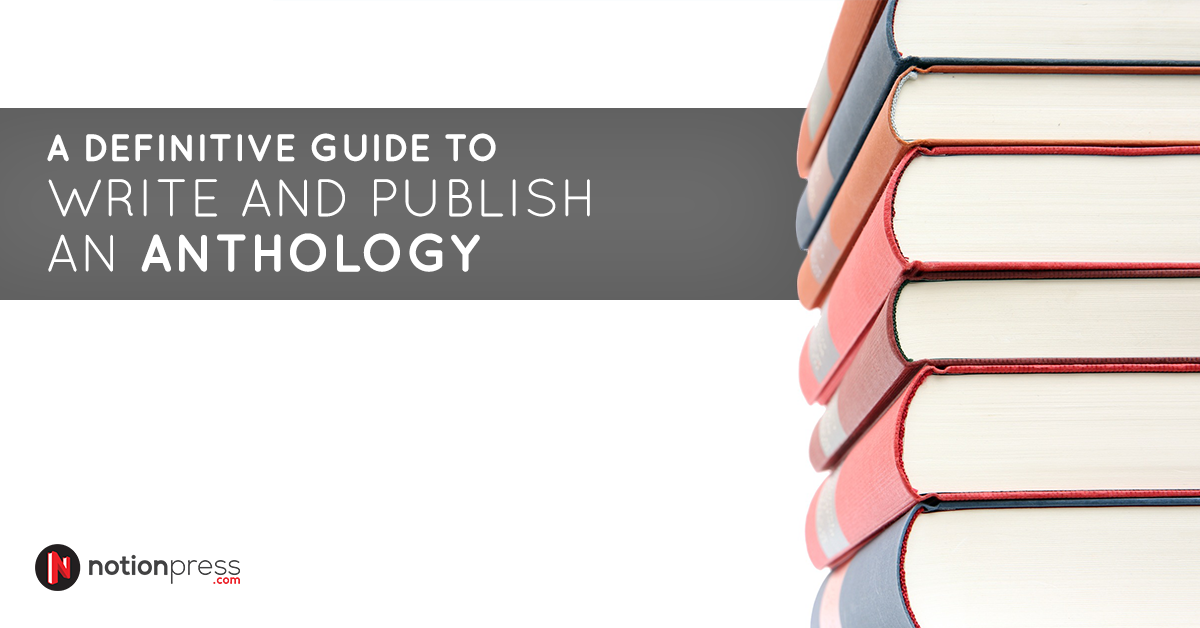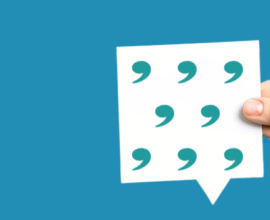A definitive guide to writing and publishing an anthology
An anthology is a collection of selected writings by various authors, and usually, the several stories or writings are in the same literary form, of the same period, or on the same theme. Alternatively, it can also be a collection of selected writings by one author.
These days, anthologies are very much in trend. For starters, they are quick reads. Readers can read the book at one stretch or by taking breaks between each story. Also, an anthology is a great gifting option to your book lover friend as you don’t have to worry if your friend will like the story or not. Since there are a plenty of stories in an anthology, your friend will never be disappointed.
If you are going through a writer’s block, writing for anthologies is a foolproof way to warm up your creativity. If you are a debutant author looking to build up your writing portfolio with publishing books, anthologies are the best ways to begin your writing career and make some money at the same time.
If you are interested in publishing a collaborative anthology, here is a definitive guide to writing and publishing an anthology.
Seven steps to create a collaborative anthology
- Find an interesting theme
Once you have decided that you want to create an anthology, the first step is to find an interesting topic. The theme can be as generic or as specific as you want it to be. You can merely decide a genre, say romance, and use it as a theme, or you can select a precise theme based on your chosen genre, i.e. “love letters to the person who friend zoned you.
Alternatively, you can also choose a theme that can be written across various genres. This way, your anthology will be a collection of stories from diverse genres. For example, you can select a theme like childhood. The stories can be of any genre like philosophy, inspirational, non-fiction, romance, thriller, mystery, fantasy, horror, history, mythology, etc.
- Set SMART goals
Once you have decided the theme, go ahead and create a few goals. Your goals must be specific, measurable, achievable, realistic, and time-bound. The goals can be something related to the deadline, what to do with the money earned from the book, etc.
Some examples of such goals are:
- Make the anthology a tribute to flood victims.
- Give the amount earned to charity.
- Finish the book before December 2016.
- Make the book a tribute to Indian Army.
Once the goals are set, you need to start working towards them. Also, at this point, you must decide if you are going to go with traditional publishing or self-publish the book.
- Frame guidelines for contributing writers
This step is not only important, but it is also time-consuming. Despite being a collaborative work, an anthologys beauty is its streamlined layout and template. Therefore, it is mandatory to set a few guidelines for the contributors to follow.
The first rule should be a regulation on the word count. It is quite ideal for each story to be 2000-5000 words. However, you can modify this calculation based on the number of stories you are going to use. Other guidelines can be about the tone, language, narration style, theme, formatting, etc.
Finally, the most important guideline should be about the legal details. You need to write clear rules and regulations when it comes to copyright, royalty, and payment. If the amount earned via the book goes to charity, you need to specify that as well.
- Find a publisher
Once you have decided what kind of publishing you want to do, approach the various publishing houses that will be assisting you on the same. It’s prudent to talk to publishers even before the stories are finalized. This way, the forthcoming legal procedures can be hassle free.
You can either write a proposal about your anthology to the publishing house asking them to consider the same or send them a sample story (the one you wrote) for feedback. Either way, you should have contacted a few publishers before even the anthology is ready for editing.
- Call for submissions
Nowadays, there are a lot of ways to call for submissions. If you have a circle of book lovers, writers, or bloggers, you can ask them personally to contribute. However, you can also put a social media post asking for contributors.
In both the cases, make sure that you provide the guidelines clearly and discuss any legal details beforehand. This is another time-consuming step as it involves a lot of back-and-forth communications.
- Collect necessary documents and the manuscript
Apart from the manuscript, contributors participating in the anthology must provide you a copyright transfer form, a consent letter, etc. Also, if your anthology is based on real-life events, you might also need to get consent letters from the people involved.
Share a copy of every legal document with your publisher as well.
- Edit the manuscripts
Depending on the quality of entries, decide if you are going to publish them all or select the best ones. Once selected, edit the stories that will go on the anthology. Like in any book, even in anthologies, editing plays a significant role.
To start with, editing anthologies is all the more tedious than usual stories. Therefore, it is advisable to have a professional editor to edit, proofread, and beta-read the stories.
Once these seven steps are done, your anthology can be now placed safely in your publishers hands.
Some tips for creating a multi-author anthology
Creating a multi-author anthology is not an easy job. However, if you follow these tips, you can collaborate with multiple authors for an anthology in a hassle-free manner.
- Invite two to three times as many people as you need It is always advisable to have more people contributing to the anthology; this way you will have more options to choose from.
- Give early deadlines Not everyone will adhere to deadlines. At times, you may want to go a little back-and-forth with the authors on feedback and changes, so give a time limit at least a couple of weeks before the actual one.
- Be specific on the language, style, and tone Some of your authors might follow British English, while the others may use American English. Similarly, some people might write in first person point of view, and others might use a third person perspective for the narration. Therefore, it is mandatory to be particular about these details in the guidelines.
- Give substantive and constructive feedback An anthology is a hard work of more than one author. To make the anthology perfect and appealing, all the stories must be individually significant. Therefore, read through every story personally, get inputs from your editor, and communicate the feedback to your writers.
- Have a streamlined collaborative editing platform If you are going to send back a story with your editors comments to the authors, use Google Docs or other cloud-based word processors. You must also make sure that the document is editable only by the concerned author, editor, and you.
- Have a set of beta-readers Beta-reading is crucial when it comes to anthologies. Therefore, invite a few renowned beta-readers or proofreaders, and give them ample time to read your edited anthology before it goes for printing.
Some tips for contributing to a multi-author anthology
If you are one of the writers contributing to someone else’s anthology, then here are some of the tips that might help you in writing an ideal story for anthologies.
- Don’t apply for every anthology invite: While deciding if a particular anthology is right for you or not is entirely a personal decision, you must evaluate every factor for each and every anthology before making a decision. You must mainly consider if contributing to the particular anthology is the best choice for your writing career.
- Adhere to guidelines This makes life easier for everyone. Guidelines are formed for a reason, so take your time, read the instructions carefully, and stick to it while writing.
- Try different genres If you are comfortable with one particular genre, don’t write your entry for anthologies too in the same genre. Try to experiment writing in other genres. Firstly, your writing will be fresh for you as well as your readers. Additionally, you will get to try your hand at a whole new genre.
- Understand your rights Before signing a contract or any form, read the content of the form thoroughly. Also, if something is unclear, get it sorted verbally as well as in writing before signing. Some of the things that you need to consider are about copyrights, payment, etc.
- Edit and proofread before sending it out When you submit your anthology, make it sure that your work is error-free. Don’t send out the first draft itself. Write, edit, re-write, re-edit, and only when you are satisfied, share the work to the concerned person.
- Don’t burn the midnight oil: Mostly, the call for entries to an anthology will be having a minimum of a month’s deadline. Use the time wisely, and start writing well before the deadline. This way, your work will not only be perfect, but you will have a plenty of time to think and put your creative foot forward.
In the end, an anthology like any other book needs a great cover design, an attention-grabbing book blurb, crisp editing, and good marketing. Therefore, no matter whether you are writing or collaborating with other writers, be wise and enduring.






